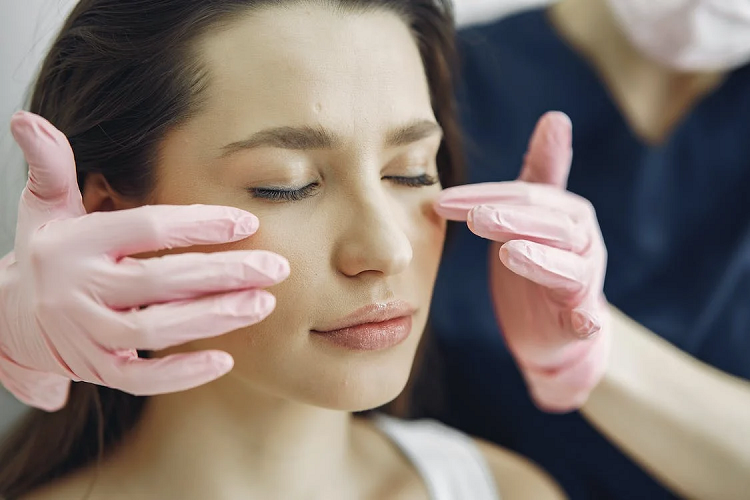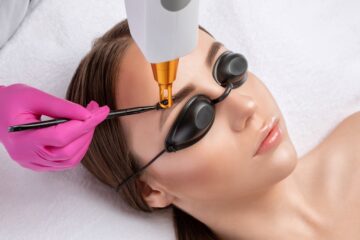6 Ways To Prepare Yourself For A Skin Tightening Treatment

Skin tightening treatments have become increasingly popular over the last decade as more patients seek non-surgical options to improve skin laxity and reduce signs of aging. As we get older, our skin loses elasticity and collagen, leading to sagging skin and wrinkles on areas like the face, neck, arms, thighs, and abdomen. Skin tightening treatments provide a way to tighten loose, sagging skin for a more youthful appearance without surgery.
With impressive results seen from treatments, it’s no wonder these non-invasive procedures are in high demand. If you’re considering a skin tightening treatment, proper preparation is key to getting the best results. This article will provide some tips to help you get ready.
Table of Contents
Understanding Different Skin Tightening Treatments
The key to preparation tips is to understand how they work. Various technologies, including radiofrequency, ultrasound, or lasers, are used to tighten the skin’s deeper layers. The heat triggers your body’s natural healing response, boosting collagen and elastin production. Different skin tightening systems use different methods to safely heat skin tissue without damaging the outer layer.
Some of the most common options are:
- Radiofrequency treatments like Venus Legacy use radiofrequency energy to deeply heat the skin and stimulate collagen. This is one of the most popular skin-tightening methods. Those interested in this method often search for Venus Legacy before and after results to visualize its efficacy.
- Laser skin tightening like Titan uses an infrared light source to target water within the skin and heat tissue. This causes collagen remodeling.
- Ultrasound skin tightening uses focused ultrasound energy at various depths to induce collagen rebuilding. Common options are Ultherapy and Ultrashape.
- Combined radiofrequency and ultrasound treatments like Ultraformer deliver both radiofrequency and focused ultrasound for enhanced skin tightening.
1. Stay Hydrated
Drinking plenty of water in the days and weeks leading up to your skin tightening treatment helps hydrate and plump up your skin, making it more receptive to the procedure. Aim for at least eight 8-ounce glasses of water per day or about 2 liters total.
Maintaining proper hydration ensures your skin remains supple and resilient, allowing it to better withstand the controlled impact of skin tightening devices. Furthermore, water plays a crucial role in flushing out toxins and transporting essential nutrients that repair damaged collagen and elastin.
With its bouncy and full nature, well-hydrated skin facilitates optimal heat penetration during skin tightening. To achieve the best results, ensure you’re consistently consuming ample fluids leading up to your treatment.
2. Avoid Sun Exposure
Excess sun exposure can prematurely age and dry out your skin, so strictly limit unprotected time in the sun in the month before your treatment. Use a broad-spectrum SPF 30 sunscreen daily if you will be outdoors.
The UV radiation from sunlight damages skin cells, thinning the epidermis. It degrades collagen and elastin fibers that the skin tightening treatment aims to improve. Sun exposure also causes dehydration, which reduces plumpness.
However, if you do get mild sun exposure, allow a few weeks before your appointment for the skin to fully heal. Check for any lingering redness, tenderness, or peeling. If you have been sunburned, reschedule your appointment.
3. Stop Exfoliating 5-7 Days Before
Stopping exfoliation 5-7 days before a skin tightening treatment allows your most superficial skin layer to rebuild and protect itself. Skin becomes more sensitive and reactive after exfoliation, so it is better to hold off to make the treatment more comfortable.
Avoid using any exfoliators, brushes, masks, alpha hydroxy acids, retinoids, or anything that chemically or physically exfoliates during this time. Scrubs and brushes can cause microtears that heat can penetrate during treatment. Similarly, acids and retinoids thin the skin and amplify heat sensitivity. Allow your skin barrier to strengthen by avoiding anything that removes dead skin cells.
It takes skin about a week to regenerate its outermost layers. Allowing this protective layer to rebuild guards against irritation, redness, and potential blistering from the heat and energy used during skin tightening.
4. Wash Skin Gently
On the morning of your treatment, use a mild, fragrance-free cleanser and lukewarm water to gently wash your face and any other treatment areas. Avoid any harsh cleansers, toners with alcohol, or astringents which can cause sensitivity.
Your skin must be completely clean and free of any lotions, creams, oils, makeup, deodorant, perfumes, etc. A gentle wipe-down with micellar water after cleansing can help remove any remaining residue without irritation. Harsh products strip natural oils that protect skin from heat penetration.
Gentle cleansing protects the skin’s barrier and prevents penetration of heat deeper than intended. It also avoids irritation, redness, and discomfort during the procedure.
5. Take Anti-Inflammatories
Pop an over-the-counter anti-inflammatory medication like ibuprofen an hour before your appointment. This helps prevent swelling, redness, and discomfort during and after the procedure.
Always check with your provider first about dosage and any contraindications with medications or conditions. Do not exceed dosage recommendations. Having an anti-inflammatory on board can make the treatment significantly more comfortable. The controlled skin damage from skin tightening triggers inflammation, which is part of the healing process. Getting ahead of it with an anti-inflammatory reduces side effects and allows for a more pleasant experience.
6. Wear Comfortable Clothing
Wear easy-to-remove clothing like button-down shirts, wrap dresses, and stretchy pants or skirts. Treatment areas will be exposed during your appointment, so choose pieces that are quick and comfortable to take off and put back on.
Avoid tight clothing like restrictive waistbands, stiff denim, shapewear, or anything binding. You may experience some temporary swelling or redness after treatment, so loose, breathable fabrics are ideal.
Comfortable clothing allows access to treatment areas without straining delicate, healing skin. It prevents irritation from rubbing on inflamed areas. Additionally, loose garments prevent putting pressure on swollen or tender spots after the procedure.
Conclusion
Skin-tightening treatments require proper diligence and preparation for optimal results and a smooth recovery. By following these above tips, you can ready your skin for your upcoming procedure and take steps toward achieving your aesthetic goals. Avoid anything that may irritate or dry out the skin pre-treatment while supporting healing post-procedure with SPF, hydration, and rest. With proper preparation and care, your skin will be ready to reap the full benefits these transformative skin-tightening treatments offer.
Leave a reply
You must be logged in to post a comment.




















